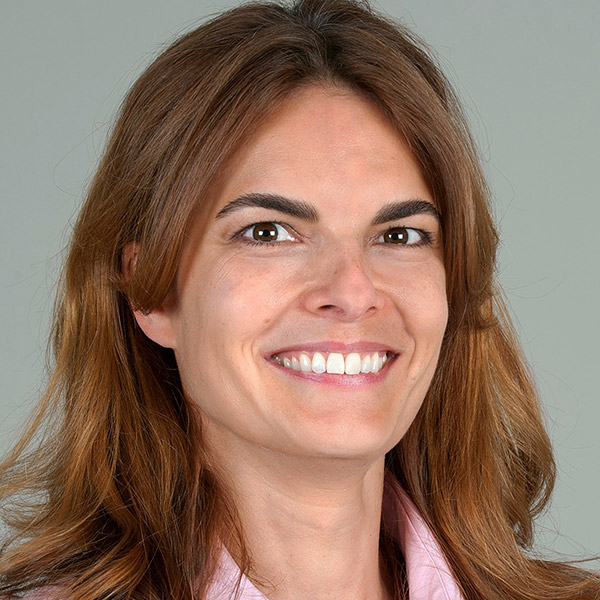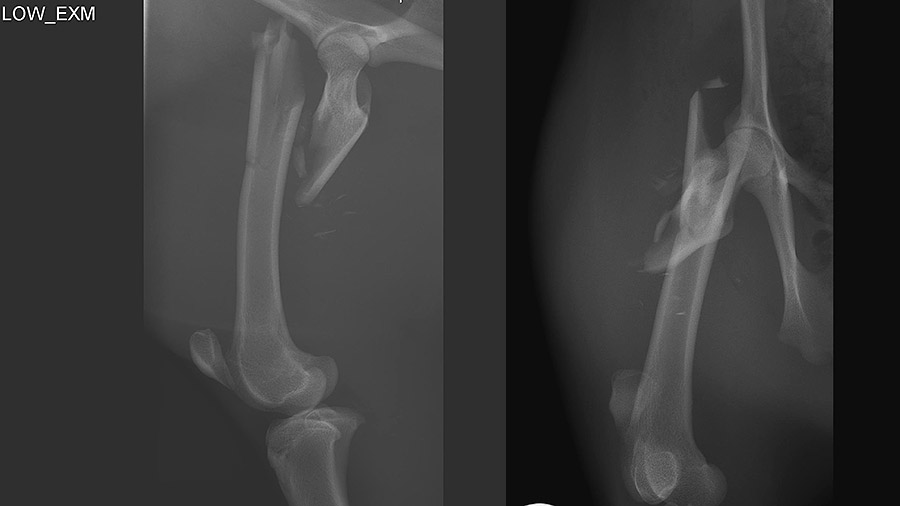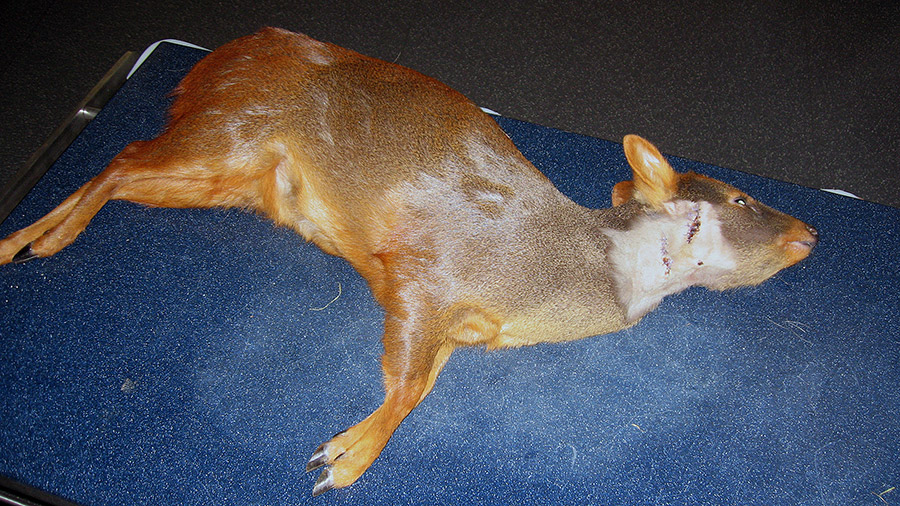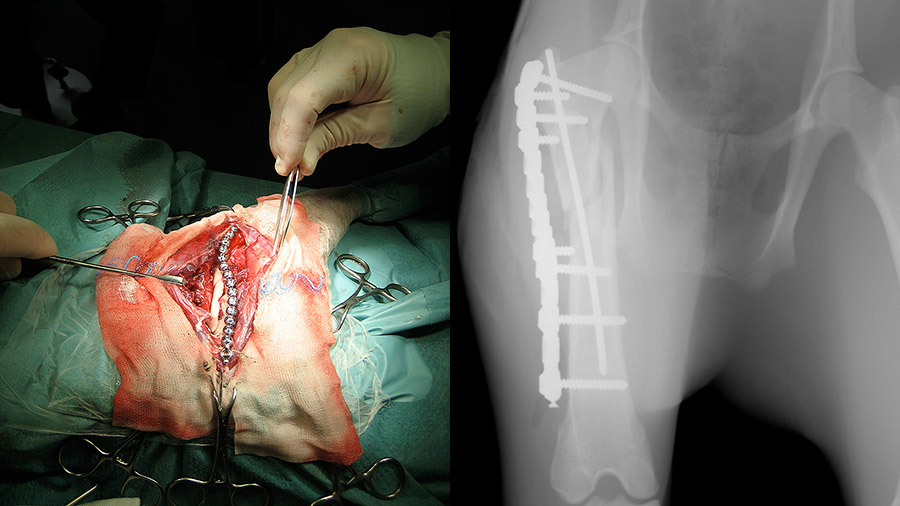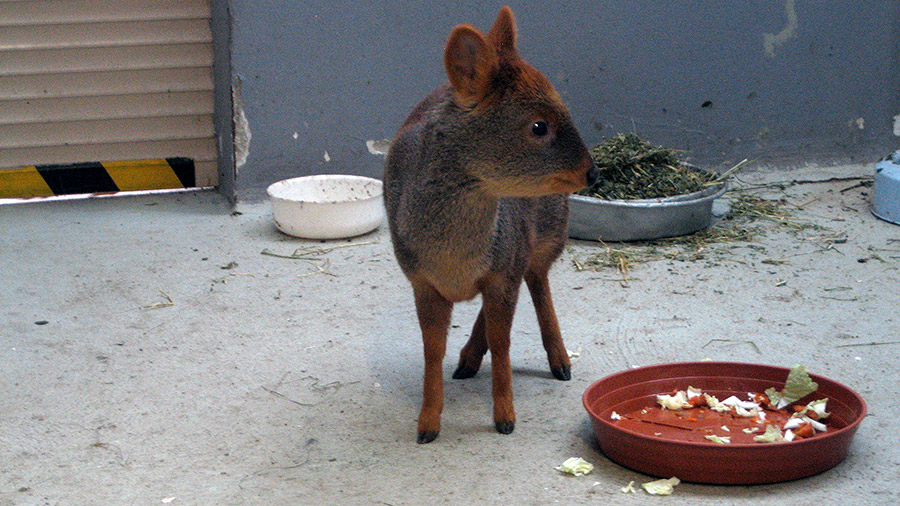Ilka and the pudu
WITH ILKA JOPP
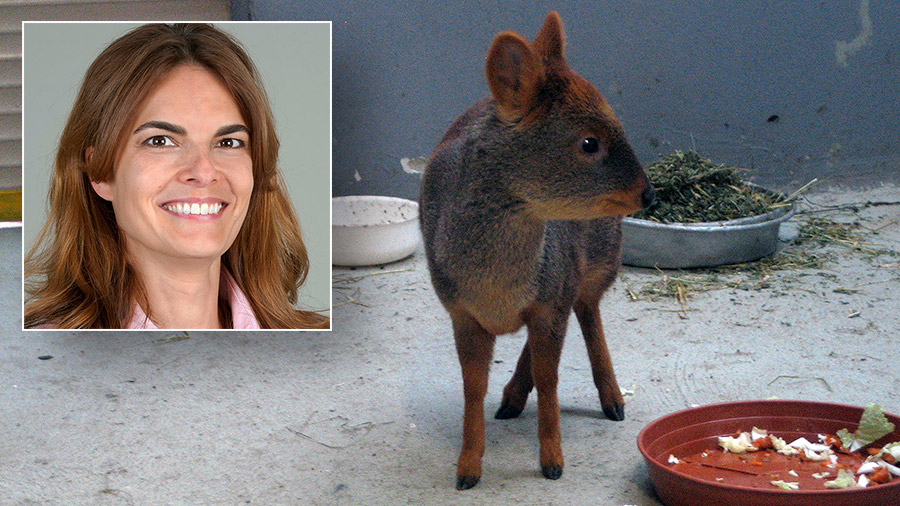
That complex case came to Jopp in 2008, shortly after she joined Universität Leipzig’s surgical department as an attending physician, just a year after she had completed her veterinary residency at Ludwig Maximillans Universität München in Germany. A pregnant pudu, Esta, had suffered a comminuted subtrochanteric fracture in her compound Zoo Halle.
“I would have preferred to have my boss in the surgery department do this surgery, but he was on paternity leave,” Jopp recalled, laughing.
A big challenge
Officials at the Zoo Halle had approached Jopp with an X-ray of Esta’s injury.
“Even getting the x-ray was no easy task, either,” she added. Because pudus are such shy, skittish and solitary animals, they tend to bolt when approached, so her caregivers at the zoo used a dart gun to tranquilize her for the x-ray process.
“The x-rays showed that it was a rather complicated fracture, around two weeks old. She was lame and in pain—and these are animals that have to run. Because they are so easily frightened, it is their nature to run away,” Jopp said, adding that a return to full function was key to ensuring the animal’s quality of life.
Complicating the case was a range of factors: Esta’s pregnancy, a lack of scientific literature on pudu anatomy, and the fact that pudus are ruminant animals requiring extra caution when they are sedated for surgery. So the pressure was on when Esta arrived in the operating room.
High stakes
“Because so little is known about pudu anatomy, I did the approach that I knew from operating on dogs and it actually was not much different. I was more concerned by the fact that she was pregnant, that I really had to achieve stable fixation, and that she was a ruminant animal requiring an air tube to her stomach because ruminant tend to gas up and get stomach distension that can be dangerous,” Jopp said.
Over the course of the two-hour surgery and assisted by Prof Walter Brehm, Universität Leipzig Head of Equine Surgery, Jopp reduced the pudu’s fracture as much as possible, applied a pin inside the bone to guarantee correct length and alignment, and then applied a locking “string of pearls” (SOP) plate to stabilize the bone.
“I wanted something very stable because this was a very proximal fracture. Also, pudu bones are quite brittle, so we needed as many screws as possible and good fixation between the plate and bone in order to achieve a stable environment for healing,” she said.
Despite the high stakes—Esta was one of just three remaining pudus at Zoo Halle after a viral infection swept through its herd—having the AO Principles as her guide inspired Jopp’s confidence.
“Performing this surgery was definitely good for my confidence. It showed me that even with all of the complicating factors, by sticking to the AO principles, everything turned out fine,” said Jopp, who even managed to find some humor in the situation once the procedure was complete.
A pudu fawn named Ilka
“I was so relieved when I was done with surgery. I told the zoo veterinarian, ‘If Esta gives birth to a girl, you have to name her Ilka for me.’”
And two or three weeks later, when Esta’s fawn was born, Zoo Halle telephoned Jopp.
“They said, ‘The pudu gave birth, and now we have a pudu named Ilka,’” she recalled.
Thanks to the AO Principles, Esta was able to live out the rest of her life pain-free. As for Jopp, AO VET keeps her connected to teaching and on the leading edge of veterinary orthopedic surgery.
“I was exposed to AO VET early in my training and, after I left Universität Leipzig for private practice, I didn’t have time for teaching,” she said. “Being an AO VET faculty member allows me to teach in a hands-on way in a field—veterinary orthopedics—that I find really interesting. With every single AO VET course, no matter how basic, I learn something from both fellow faculty members and participants.”

